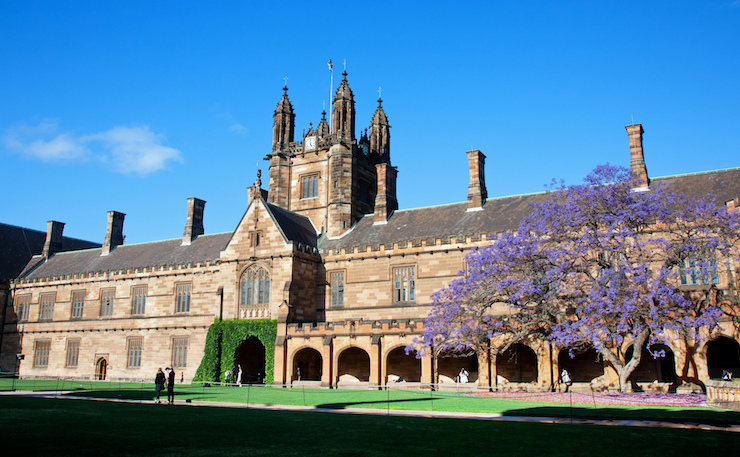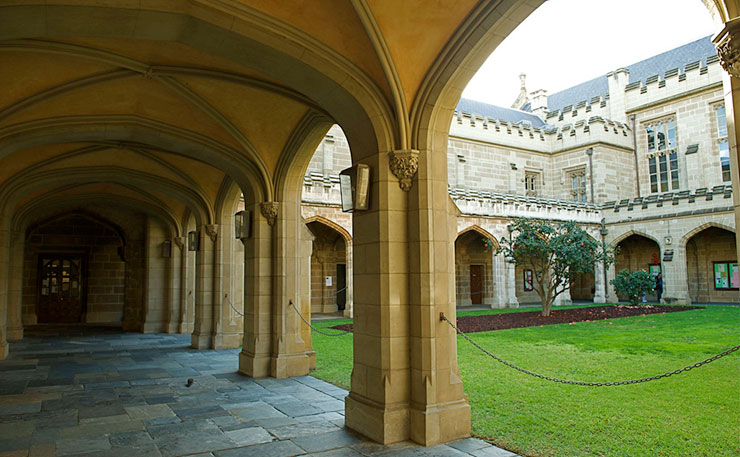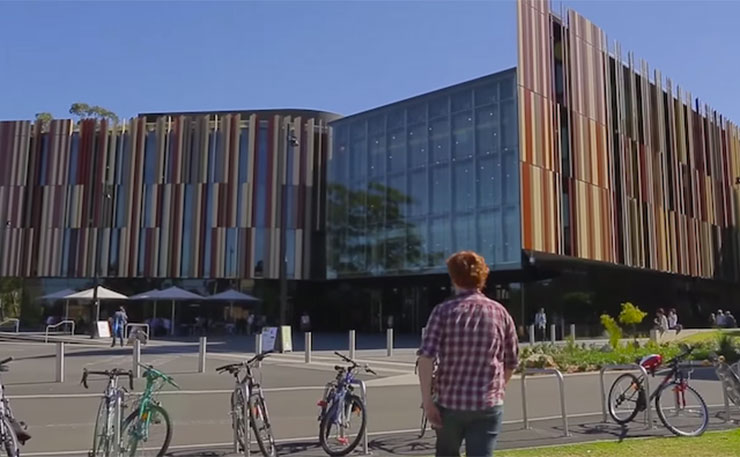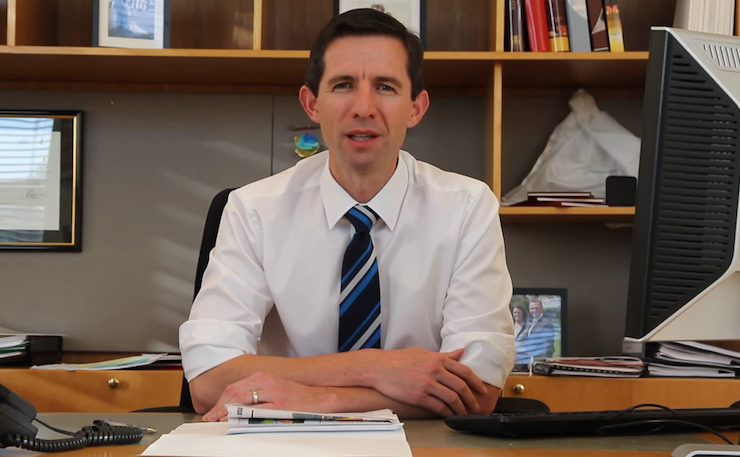The university funding cut announced in last week’s mid-year economic statement is bad public policy, writes Ben Eltham*. It’s also bad politics.
Politics is a strange and often inexplicable business. Having covered the federal Parliament for a decade now, I can readily admit there are some things I simply do not understand.
Over the years, I’ve seen some bewildering decisions. Labor’s disastrous leadership implosion in 2010 was probably the most destructive, but the Coalition has also been responsible for its share of self-inflicted wounds – the 2014 budget, for instance.
But when it comes to stupid politics, I can’t think of too many dumber calls than the Coalition’s ongoing crusade against the university sector.
For years now, the government has been trying to cut university funding – ever since the ill-fated 2014 budget that cost Joe Hockey and Tony Abbott their careers.
Taking money off universities has never been popular. But that hasn’t stopped the Coalition. While a recalcitrant Senate has stopped it clawing back any money from the sector, the Liberal Party has managed to brand itself as the party of $100,000 degrees.
The madness continues. The government announced last week that it will freeze the amount of funding it gives to universities for each student through the Commonwealth Grant Scheme, from now on. Given the grants scheme is indexed and was scheduled to increase annually, this amounts to a funding cut in real terms.

The changes will slash around $2.2 billion from university funding, and may force some universities to offer fewer places. This will hit smaller suburban and regional campuses hard, as it is these institutions that most rely on domestic undergraduates for their funding.
The new funding freeze amounts to a major change in Australian higher education. As noted education analyst Andrew Norton (a former Liberal staffer) observed last week, it represents the end of the demand-driven system.
Education Minister Simon Birmingham claims it is all about the money, flagging the cuts as a cost-saving measure.
“The policy measures announced in MYEFO will partially deliver on previous budget decisions that moderate the rate of funding growth, which had contributed to the budget deficit, while still driving universities to focus on the needs of students,” he wrote in a media release.
This is a weak justification. The government has plenty of money. The MYEFO is in fact billions of dollars better off than forecast, with Treasurer Scott Morrison trumpeting a $5.8 billion improvement in the deficit since May. No-one seems to care about deficits run by a conservative government, anyway.
Moreover, all credible modelling of university funding shows that enrolling more students is good for the budget bottom line. Graduates have lower unemployment rates and earn more across their lifetimes. They therefore pay more tax. They also tend to be more productive, which helps economic growth. Universities are also huge exporters in their own right, pulling in billions annually for the local economy from international students who travel to Australia for their education.
Birmingham has been vocal in recent months, attacking the universities for spending too much on marketing and administration. There is some substance to this argument: universities are indeed spending up big in the race to attract new students, and many really are encased in thickets of maddening red tape.

But both the marketing and the admin costs are the government’s own fault. The big dollar advertising campaigns are the inevitable consequence of a demand-driven system, in which the universities compete to enrol the most students.
Administration costs are also in part due to government regulation, as well as a desire to offer better student services.
It’s true that universities have been on a building spree, pouring concrete and cutting ribbons on handsome new libraries and lecture theatres. But again, this is due to increasing enrolments.
An expanding university system needs infrastructure. Universities are teaching around 170,000 more students than they were in 2009. All those extra pupils require places to learn and study.
The really strange thing about this debate is the fact that the minister is worried. After all, enrolling more university students is, on the whole, a good thing for Australia.
It’s an old-fashioned idea these days, but getting an education is about more than simply getting a job. Education is an intrinsically good thing. By learning about the world around us, we train our minds and enlarge our spirits. At their best, universities cultivate understanding and enrich the inner lives of those who study there.
Of course, I would say that, wouldn’t I? After all, I work at a university.
Yes, quality matters, and the universities need to be careful not to dumb down their degrees.
The coal-face of the mass university can be a confronting thing. Inspirational teaching can be difficult in classes of students distracted by social media and working long hours in casual jobs. Lecturer Richard Hil has documented the atomised and often stressful experience of contemporary university students. In a long essay for the Guardian this week, Charles Sturt University lecturer Tegan Bennett Daylight lamented the dumbed-down state of contemporary literature classes.
Bennett Daylight’s essay was eloquent, but wrong. Declining standards are always the complaint of teachers in an expanding system. The available evidence suggests Australian universities are actually doing quite a good job. The universities point out that despite the big growth in enrolments in recent years, drop-out rates have barely changed. The main reasons that students drop out are not poor teaching or a corporatised university experience, but health problems and the age-old problems of juggling work and study.
And if Birmingham is truly worried about quality, why freeze funding? A government truly worried about quality would increase funding per student, as it has done in the school system with its Gonski 2.0 reforms. This decision does the opposite.

The university funding freeze stores up some big trouble for Simon Birmingham down the track. It will impose real hardship on regional universities; some of the most vulnerable may even get into serious trouble.
The demand driven system has opened up yawning gaps in the Australian system between the haves and have-nots. While the sandstone Group of 8 unis rake in the dollars from lucrative graduate masters courses in business and law, the younger and less established institutions are barely keeping their heads above water.
Victoria University, for instance, has been running a multi-million dollar deficit for the past three years. Finances are tight at several other institutions. Squeezing the sector could reveal some nasty situations, as universities that have expanded fast face sudden constraints on their income.
The boss of Charles Sturt University, another regional institution that does plenty of heavy lifting with poor and Indigenous students, has already spoken out about the cuts. Charles Sturt vice-chancellor Andrew Vann was vocal in his criticism.
“The potential impact to regional universities and our current and potential students is likely to be severe,” Professor Vann wrote in a media release.
“The cuts will turn students away from studying in our regions and goes against our mission and vision to provide job-ready graduates to support the professions in our regions, ” he argued. “The government is throwing a spanner into the works of the system. It looks very much like revenge for the government’s failure to pass their legislation in the Senate.”
Perhaps the strangest aspect of the Coalition’s ongoing attack on higher education is that it is unpopular. For a second-term government in serious trouble, it doesn’t make much sense.
The Coalition is behind in the opinion polls, and has been for all of 2017. It is particularly unpopular with younger voters. According to the detailed Newspoll figures, the Coalition is polling just 30 per cent amongst 18-35 year olds. Needless to say, this is not an election-winning figure.
Given this, you’d think the government would be keen to avoid policies that might further alienate younger voters. At the very least, you would imagine the Coalition would not be trying to increase taxes for people in middle incomes, which is what the lowered repayment threshold will mean.
But you’d be wrong. As 2017 has so regularly demonstrated, the Turnbull government is its own worst enemy.
So why is the government doing it?
I honestly don’t know. Some things just can’t be explained. The Turnbull government is an ongoing mystery of self-sabotage, and the university crusade is just the latest episode.
* Disclosure: Ben Eltham is employed as a lecturer at Monash University.
PLEASE CONSIDER SHARING THIS STORY ON SOCIAL MEDIA: New Matilda is a small independent Australian media outlet. You can support our work by subscribing for as little as $6 per month here.
Donate To New Matilda
New Matilda is a small, independent media outlet. We survive through reader contributions, and never losing a lawsuit. If you got something from this article, giving something back helps us to continue speaking truth to power. Every little bit counts.




